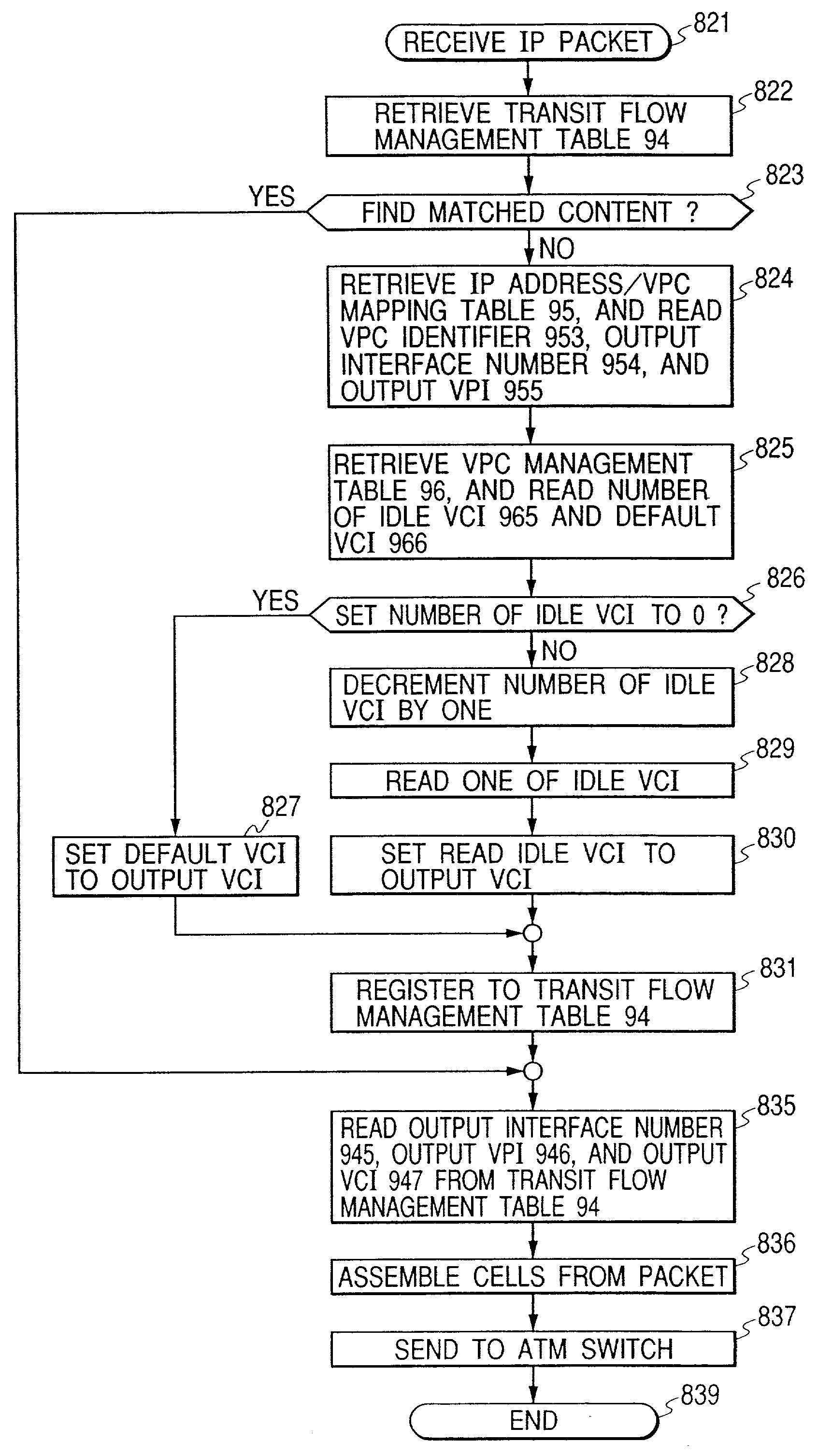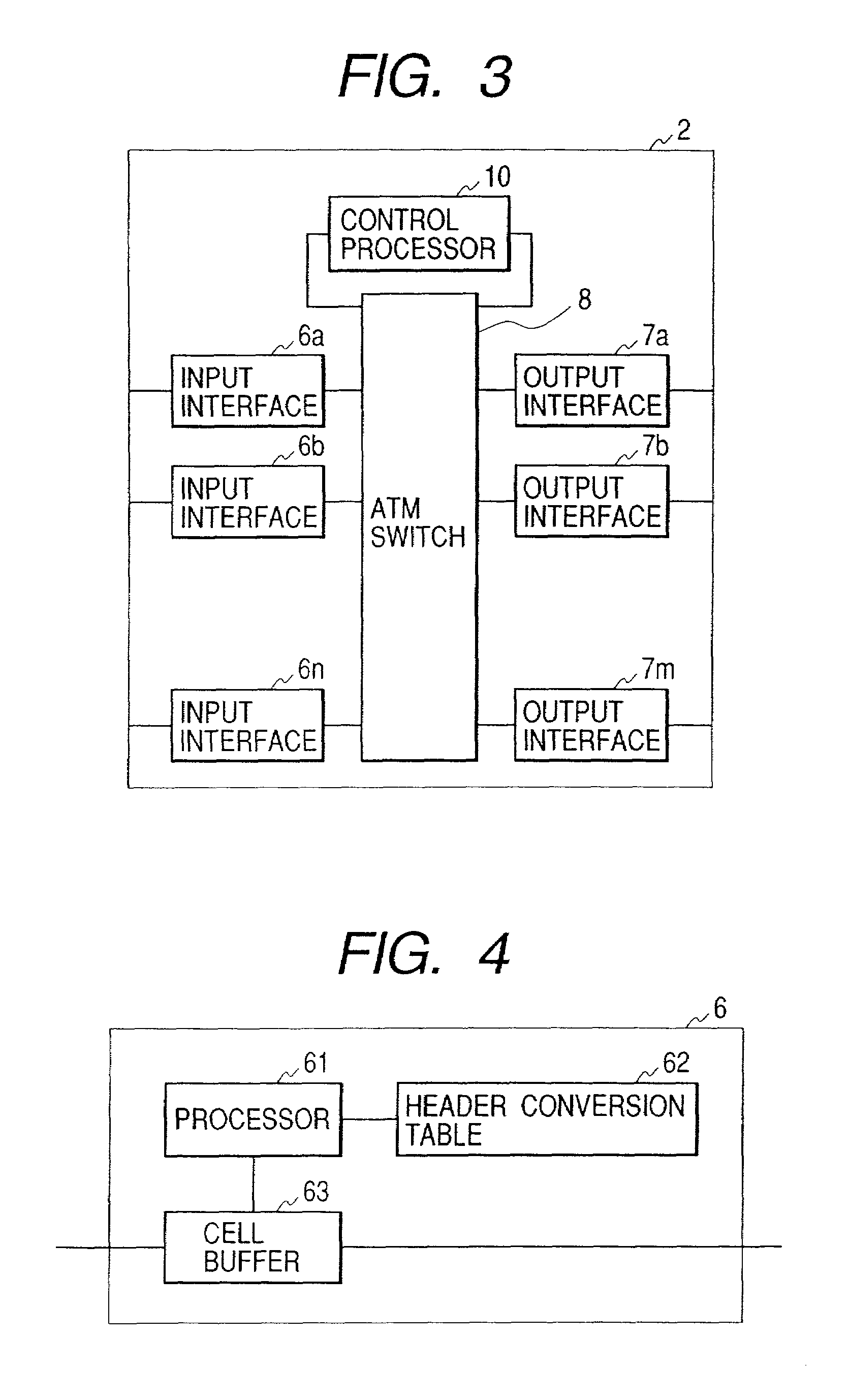Packet switching system, packet switching network and packet switching method
a packet switching and packet switching technology, applied in data switching networks, digital transmission, time-division multiplexing selection, etc., can solve the problems of resource allocation becoming a bottleneck, no significant improvement in performance, and limited throughput, and achieve small delays in cut-through and limited constraints.
- Summary
- Abstract
- Description
- Claims
- Application Information
AI Technical Summary
Benefits of technology
Problems solved by technology
Method used
Image
Examples
Embodiment Construction
[0052]Preferred embodiments of this invention will now be described with reference to the accompanying drawings.
[0053]FIG. 2 shows a typical network constitution to which the invention is applied. In FIG. 2, reference numerals 1a and 1b stand for edge nodes; 2a, 2b and 2c for transit nodes; 3a and 3b for gateways; 4a, 4b and 4c for networks; and 5 for a network management system.
[0054]FIG. 1 depicts a typical constitution of the edge node 1 (1a, 1b). In FIG. 1 reference numeral 6 (6a, 6b, . . . , 6n) stands for an input interface, 7 (7a, 7b, . . . 7m) for an output interface, 8 for an ATM switch, and 9 for a control processor.
[0055]FIG. 3 illustrates a typical constitution of the transit node 2 (2a, 2b, 2c). In FIG. 3, reference numeral 6 (6a, 6b, . . . , 6n) stands for an input interface, 7 (7a, 7b, . . . , 7m) for an output interface, 8 for an ATM switch, and for a control processor.
[0056]FIG. 4 shows a typical constitution of the input interface 6 (6a, 6b, . . . , 6n). In FIG. 4,...
PUM
 Login to View More
Login to View More Abstract
Description
Claims
Application Information
 Login to View More
Login to View More - R&D
- Intellectual Property
- Life Sciences
- Materials
- Tech Scout
- Unparalleled Data Quality
- Higher Quality Content
- 60% Fewer Hallucinations
Browse by: Latest US Patents, China's latest patents, Technical Efficacy Thesaurus, Application Domain, Technology Topic, Popular Technical Reports.
© 2025 PatSnap. All rights reserved.Legal|Privacy policy|Modern Slavery Act Transparency Statement|Sitemap|About US| Contact US: help@patsnap.com



